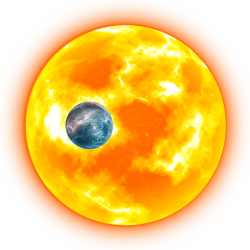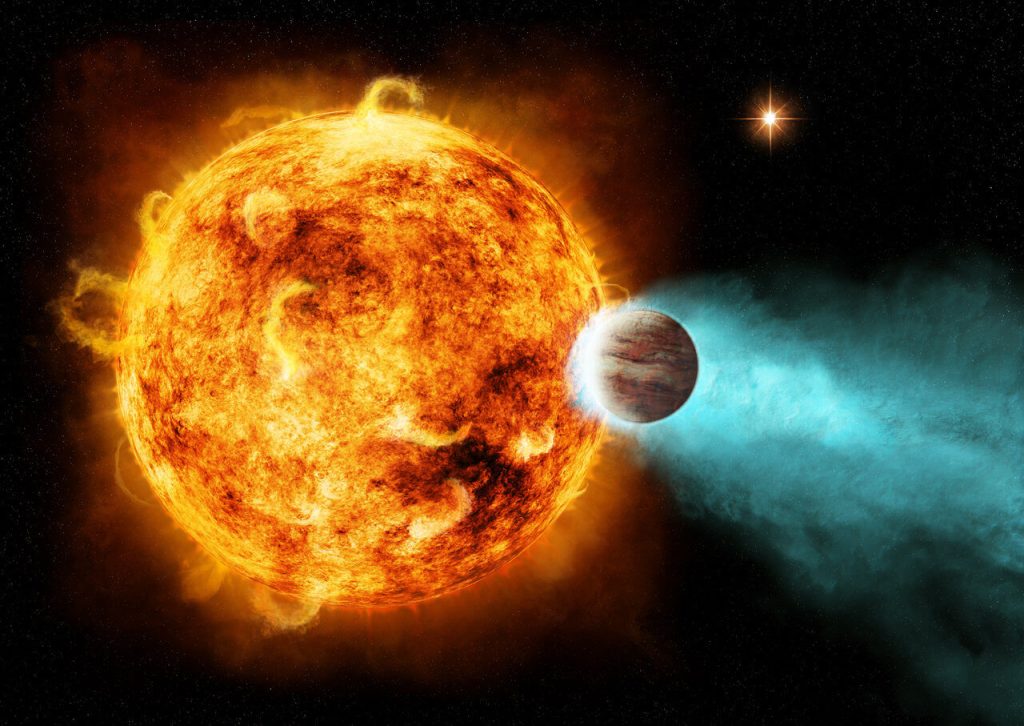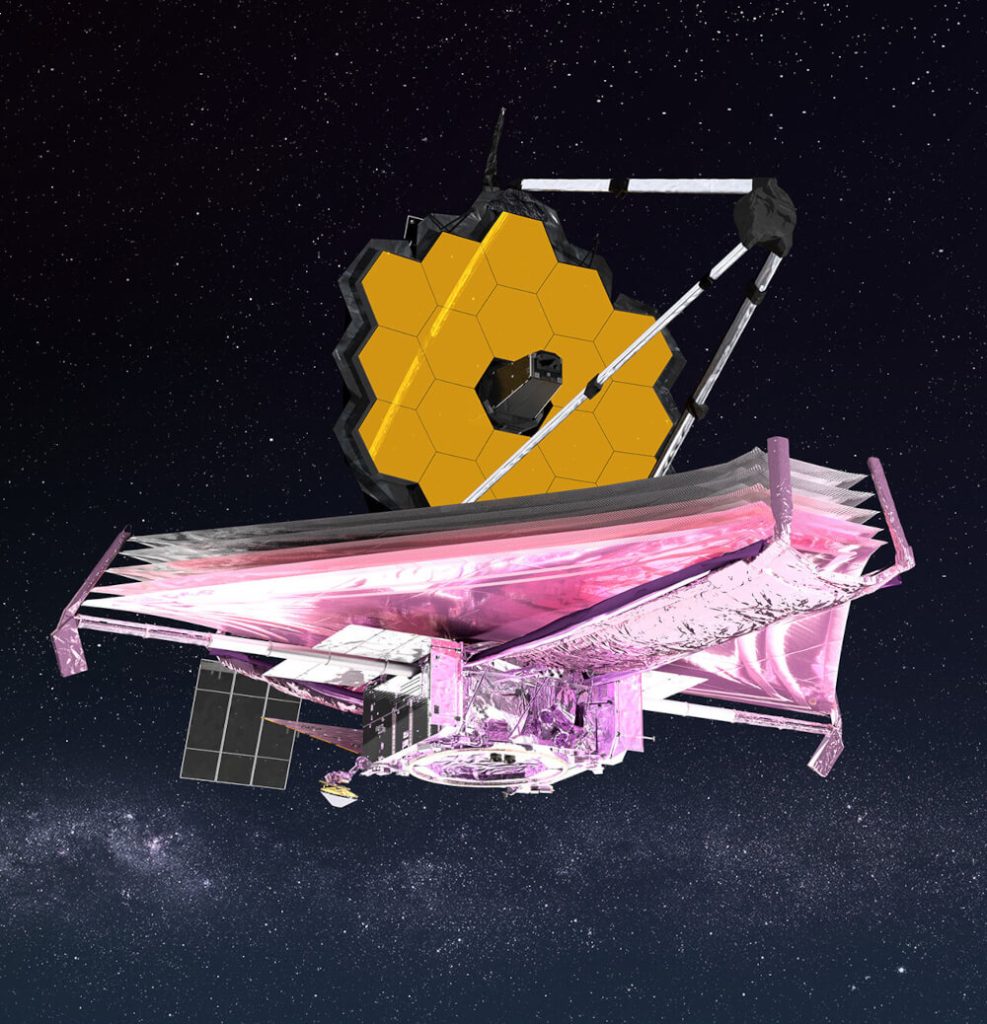Exoplanets
Picture credits


What are exoplanets actually? The word is an abbreviation of “extrasolar planet” and refers to a planet outside our Solar System. Astrophysicists have been searching for such planets for decades, motivated by the search for life far from Earth. The first two exoplanets were discovered in 1992. They orbit a pulsar, i.e. an extremely heavy remnant of a star with an extremely strong magnetic field. The very fact that planets can exist in this environment is a sensation!
Since then, over 5500 exoplanets have been discovered by space telescopes and space missions (as of June 2023). Here you can see the current number of confirmed and suspected exoplanets.

Our search for exoplanets has revealed a wide variety of strange planet types, challenging our current understanding of planetary formation and evolution. Have you ever heard of Hot Jupiters, Super-Earths, and Neptinis?
Hot Jupiters are gas giant planets that orbit very close to their host stars, completing a revolution in just a few days. The existence of Hot Jupiters is surprising as current theories of planet formation suggest that gas giants should form further out in the system, beyond the so-called frost line.
Super-Earths and Neptinis are planets with masses larger than Earth but smaller than Neptune – hence the names. These planets are thought to be the most common type of exoplanet discovered so far, yet their composition remains a mystery. Some may be small rocky planets with a thin atmosphere (more Earth-like), while others may have a thick atmosphere of gas and ice (more Neptune-like).
These strange planet types raise questions about the formation and evolution of solar systems in the galaxy. Are these types of planets common or rare? Is our Solar System typical or unique in the galaxy?
As for today, we have not observed a planetary system like our Solar System but with every newly discovered exoplanet and every improvement of our tools, our chances to find similar systems increase.

“Hot Jupiters” are actively being researched at the University of Rostock – the results inform models of the internal structure, their development and their atmosphere. One research focus is the connection between clouds and heat: planets other than Earth also have atmospheres in which clouds can form.
These can act like a huge blanket and prevent heat from escaping from the planet’s deep interior into space. Researchers suspect that there may even be clouds of iron and minerals on Hot Jupiters. The temperatures there are so high that water clouds can no longer form.
We investigate the conditions under which clouds form on gas planets and how strongly the clouds prevent the planet from cooling down during its “life”.

What looks like a spaceship from a movie is NASA’s James Webb Space Telescope. It can detect very dark and distant objects and will help study the atmospheres of exoplanets. It will look for traces of methane, which may be a sign of organic life. Many other telescopes are also dedicated to the search for exos.
To detect them, we use two different approaches: The transit method and the radial velocity method.
The transit method exploits the fact that a light source (a star) dims when an object (a planet) passes in front of it. So if we observe that the brightness of a star decreases again and again, a planet is probably moving in front of the star.
For this method, we need very sensitive telescopes: stars are huge compared to most planets. This causes the brightness to decrease by only fractions of a percent!
If we know the extent of the dimming and the size of the star, we can determine the size of the planet. From the time interval between transits, we can calculate the average distance of the planet from the star.
If you hold a weight in your hands and spin, the axis of rotation is between you and the weight. The same thing happens when a planet orbits a star: The star “wobbles” a little due to the planetary motion.
This wobble is the basis for the radial velocity method, where we measure the motion of a star. If the star is moving towards Earth, its light is more blue; if it is moving away, the light is more red.
This colour change is called the Doppler effect – which, by the way, is also the reason why the pitch of an ambulance siren changes as the ambulance passes you.

Not all planets are in a planetary system. Some planets are lonely wanderers in space – so-called rogue or lonely planets. They either formed in planetary systems and were then thrown out of the system by unstable orbits, or they formed similarly to stars.

Audio guide
(available soon)
PhD students from the Institute of Physics at the University of Rostock give exciting insights into their research and explain the universe.
Quiz
How long would it take to travel to the nearest exoplanet Proxima b with today’s technology?
